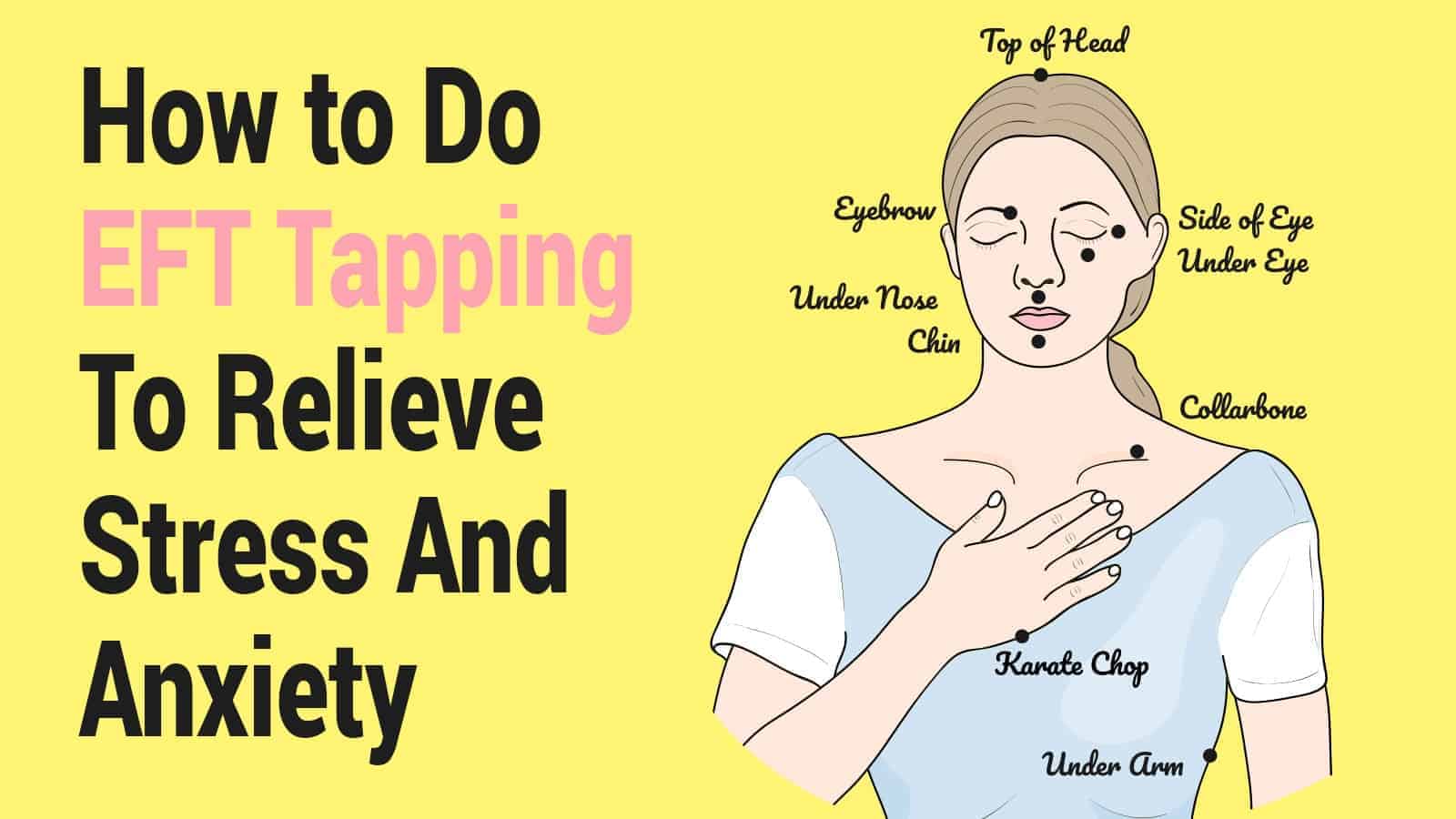With so many people suffering from anxiety and stress nowadays, solutions for these conditions have become a priority in our society. If you simply do an online search for “treatments for anxiety” or “how to be less stressed,” you will find thousands of articles. In short, plenty of people claim to have found the best remedy. If you have tried everything under the sun and still suffer from stress and anxiety, however, it might be time to give EFT tapping a try.
EFT can be thought of as a distraction for intrusive or persistent thoughts. It removes a person away from their anxious mind to focus on the tapping instead.
History of EFT
EFT began in 1980 with psychologist Roger Callahan and his patient, Mary, who had a severe phobia of water. Mary’s fear of water controlled every aspect of her life. She couldn’t even deal with the sight of water on TV and grew anxious when it rained.
Dr. Callahan and Mary had been working on this phobia for over a year but hadn’t come up with a successful treatment. However, Dr. Callahan had been studying Chinese medicines and learning about meridian points. This inspired him to come up with the first tapping treatment in modern science. He instructed Mary to tap on her cheekbone where the stomach meridian is located, as she suffered from stomach pain due to her phobia.
When Mary tapped on her cheekbone, her stomach pains seemed to miraculously disappear. Based on this preliminary investigation, Dr. Callahan ran further studies to perfect his technique, which he coined Thought Field Therapy. However, Gary Craig, the founder of EFT, trained under Dr. Callahan and observed some issues with TFT.
TFT required patients to tap on different meridians based on different problems. Gary found that, at times, this resulted in a problem being incorrectly diagnosed. He also found that patients could tap the meridians in any order to find relief.
After correcting the problems of TFT, Gary created an updated version of it called EFT, which we will explain in greater detail below.
What is EFT tapping?
Emotional freedoms technique (EFT) is an alternative treatment in the energy psychology field. It can treat mental health issues, emotional problems, and even physical pain. Some people refer to it as tapping or psychological acupressure because it is basically acupressure for the brain. The goal of this treatment is to rid your body of negative energy and remove emotional blocks from your energetic field.
Tapping is a relatively new therapy based on concepts that have been used in Eastern medicine for thousands of years. Eft tapping centers around the idea of “chi,” or energy moving throughout the body, accessible by meridian points. Think of these points as “energy highways” where the body’s energy flows. Blockages can occur along these points, which is where eft tapping comes into play.
People who utilize this technique believe that tapping on specific meridians in the body can heal emotional and physical pain. EFT is still being researched, but some trials have shown that it’s effective in treating anxiety and PTSD.
How to do EFT tapping
Just like acupuncture, EFT focuses on meridian points throughout the body to clear the body’s energy field. Practitioners believe that balancing the energy in the body can relieve symptoms associated with pain, anxiety, and other mental health issues. While acupuncture uses needles to put pressure on the meridian points, EFT uses fingertip tapping to apply pressure.
People who use this technique believe that the tapping can send signals to the parts of your brain that control stress, relieving the body of tension and anxiety. By doing this, you will teach your brain to associate the stressful event or emotion with peace and tranquility, and eliminate the negative emotions. This will help restore balance to your energetic field.
5 Steps of EFT tapping
To do this, you need to focus on one issue at a time. So, if you have more than one emotion or problem to address, repeat the steps accordingly.
Address the problem
To get the best results from this technique, identify the problem you’re having before you begin tapping. Again, focus on only one problem. Keep this issue at the forefront of your mind.
Rate your pain on a scale from 0 to 10
After identifying the problem, rate the pain you feel from the issue on a scale from 0 to 10, with 0 being the least painful or difficult and 10 being the most. The intensity level of your pain will serve as a benchmark to establish the progress you’ve made after doing a complete EFT sequence.
So, let’s say your initial intensity was a 10 and it went down to a 6 after completing the exercise; you would have a 40% improvement from the technique.
Figure out your phrase
Before you begin the exercise, you need to have a phrase that both addresses the problem and shows compassion toward yourself despite the issue. A common phrase in EFT tapping is: “Even though I deal with [fear or problem], I deeply and completely accept myself.” You can alter this phrase however you see fit, but make sure it addresses how a problem makes you feel so that you can relieve the emotional pain it causes.
EFT tapping sequence
The EFT tapping sequence involves tapping on nine meridian points throughout the body. While there are 12 meridian points that are mirrored on each side of the body and correspond with different internal organs, EFT focuses on the following nine points:
- karate chop (KC): small intestine meridian
- top of head (TH): governing vessel
- eyebrow (EB): bladder meridian
- side of the eye (SE): gallbladder meridian
- under the eye (UE): stomach meridian
- under the nose (UN): governing vessel
- chin (Ch): central vessel
- beginning of the collarbone (CB): kidney meridian
- under the arm (UA): spleen meridian
Start by tapping on the karate chop point while reciting your phrase three times, either aloud or in your head. Then, move down the list, skipping the top of the head for now. Tap the other points seven times while saying your phrase three times. While the order of the tapping points doesn’t truly matter in EFT, it’s best to start out with the suggestions of the founder.
After tapping the under-the-spleen meridian point, finish up the sequence with the governing vessel meridian point. While you do the tapping exercises, you might also want to have a “reminder phrase” to recite to keep you focused on the problem you’re trying to overcome.
For example, if your phrase was “Even though I have anxiety, I deeply and completely accept myself,” you might say, “Anxiety makes me feel powerless/scared/hopeless.” This might sound depressing, but it will help keep you focused on healing the energetic blockages by remembering the issue at hand.
Rate your pain again from 0 to 10
After your EFT tapping exercises are completed, rate the final intensity of your pain from 0 to 10. Then, compare the results with the initial intensity level to see how much negative energy you have cleared away.
Studies about EFT tapping
EFT has been found to be effective in treating patients with PTSD. In a 2013 study, researchers studied veterans with PTSD who were being treated with EFT tapping along with those who received standard treatment.
Researchers found that the participants who received EFT treatment greatly reduced their psychological stress within one month. Furthermore, more than half of the participants no longer fit the requirements for PTSD.
EFT has also shown to be effective in treating anxiety. A 2016 review compared the effectiveness of EFT tapping to standard treatment for anxiety. The study found that those who had EFT therapy had a significant decrease in anxiety compared to the participants receiving traditional treatment. However, more research is needed in this field to determine if EFT works better than cognitive behavioral therapy techniques.
Final thoughts on EFT Tapping to Reduce Stress and Anxiety
EFT is an alternative therapy used to treat emotional imbalances and physical pain. It’s used as an authorized treatment for patients with PTSD, and it’s also shown promise as a treatment for anxiety, depression, physical pain, and insomnia.
While you can find plenty of success stories and people who firmly believe in EFT, it’s still in its infancy regarding research. However, it doesn’t hurt to try it in addition to other remedies or treatments for either physical or emotional pain. You must remember that anxiety, depression, and other mental illnesses are complex. For this reason, the likelihood of overcoming these illnesses with just one type of therapy alone is slim.
It’s best to consult your doctor before beginning any type of treatment. He or she will know the best course of action to take regarding your care. Some people respond better to meditation or yoga, and others seem to do better with EFT or other tapping methods. Above all else, it’s important to find what works best for you and stick to that practice.


















